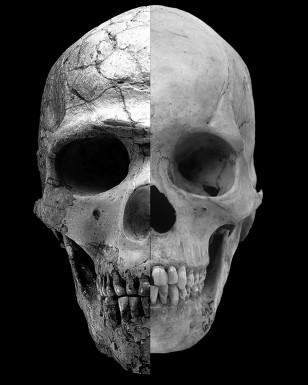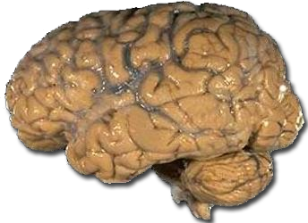
Rosetta’s Target – Comet 67P/Churyumov-Gerasimenko taken from a distance of 285 km by Rosetta’s OSIRIS narrow-angle camera (European Space Agency/Rosetta)
ESA’s Rosetta Rendezvous with its Target Comet
Today, the European Space Agency’s (ESA) Rosetta spacecraft became the first to rendezvous and orbit a comet.
Rosetta, launched back in March, 2004, spent over a decade traveling in space to pursue its target, Comet 67P/Churyumov/Gerasimenko.
Both the Rosetta and its target comet are about 405 million kilometers from Earth and are located about half-way between the orbits of both Jupiter and Mars. The spacecraft and comet are traveling through space at a speed of nearly 55,000 kilometers per hour, according to ESA.
Those associated with the Rosetta project are looking forward to gathering and reviewing the data captured by the spacecraft during its close encounter with Comet 67P/ Churyumov/Gerasimenko.
Scientists have theorized that comets provided Earth with its water some 4.6 billion years ago while others add to that theory and say that the icy space objects may have also delivered the ingredients of life on our planet.
As it gathers crucial information from the comet, the Rosetta will also look for an ideal landing site for its attached probe Philae, which will deploy from Rosetta and land on the comet for further scientific investigation this November.
Researchers Predict a Person’s Happiness with Mathematical Equation
Researchers at the UK’s University College London recently developed a mathematical equation that accurately predicts the happiness of over 18,000 people from all over the world.
They found that moment to moment happiness didn’t depend on whether or not things were just going well for the individual, but rather that things were going better than had been expected.
The UCL researchers first had 26 volunteers complete decision making tasks that, depending on their choices, could lead to them either gaining or losing money.
Throughout the testing the volunteers were asked ‘how happy are you right now?’ As the subjects performed these tasks, the researchers also measured their neural activity with an MRI.
From the data gathered during this initial phase of testing, the researchers built a computational model and presented it to some 18,420 participants in a smartphone game they called ‘What makes me happy?’
The researchers found that the equation developed from their initial research could also predict just how happy the smartphone users were as they played game, even though they could only win points and not money.
The researchers believe their findings may help give medical professionals new insight into mood disorders, which could lead to better treatments of those conditions.

A composite image shows the facial differences between an ancient (high testosterone – left) and a modern human (lower testosterone – right). Ancient human had heavy brows and a large upper face and the more recent modern human has rounder features and a much less prominent brow. (Robert Cieri, University of Utah)
Study: A Drop in Testosterone Levels Made Us More Civilized
A new study published in the journal Current Anthropology suggests that a reduction in the level of testosterone (male hormone) made humans a much more civilized species.
After studying some 1,400 ancient and modern human skulls, Robert Cieri, a biology graduate student at the University of Utah, along with his colleagues at North Carolina’s Duke University, believe that the development of modern human culture, including the complex abilities of communication and cooperation, coincided with a drop in the level of the male hormone some 50,000 years ago.
Examining the wide range of old to younger fossils led the researchers to notice a distinct difference in facial structure between humans from about 50,000 years ago to their ancestors who walked Earth many years earlier.
Humans who displayed more modern and advanced behavioral traits tended to have more “feminine” faces and skulls than their ancestors, according to the study.
The differences between the ancient fossils, compared to those more modern ones, are similar to the faces of people living today with higher and lower testosterone levels, said Cieri.
One cause for the drop in testosterone levels, Cieri said, may be increased human population density. As more and more humans began to live closer together the need for cooperation versus aggression became necessary for our species to succeed.
Our Brains Could Work Better After Some Electromagnetic Stimulation
Writing in the Journal of Neuroscience, a team of Australian and French researchers outlined their findings that stimulating a human brain with weak electromagnetic pulses just might make it work better.
The researchers from The University of Western Australia and the Pierre-and-Marie-Curie University in France conducting experiments on mice found that applying electromagnetic stimulation, called repetitive transcranial magnetic stimulation (rTMS) can change abnormally located neural connections in the brain to more normal locations.
The research team said their discovery could someday lead to treatments for those suffering from disorders that are the result of abnormal brain organization such as depression, epilepsy and tinnitus.























Could the science and technology used to make the Rosetta project a success so far be used to prevent a collision between the Earth and a disastrously large extraterrestrial object?